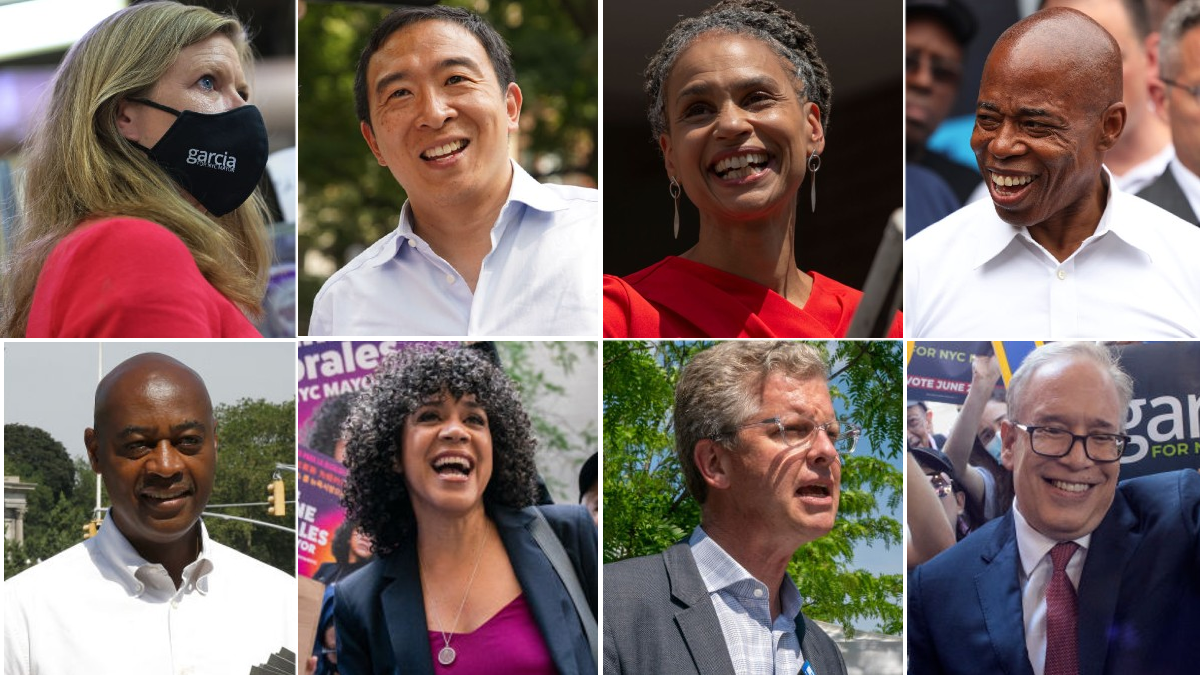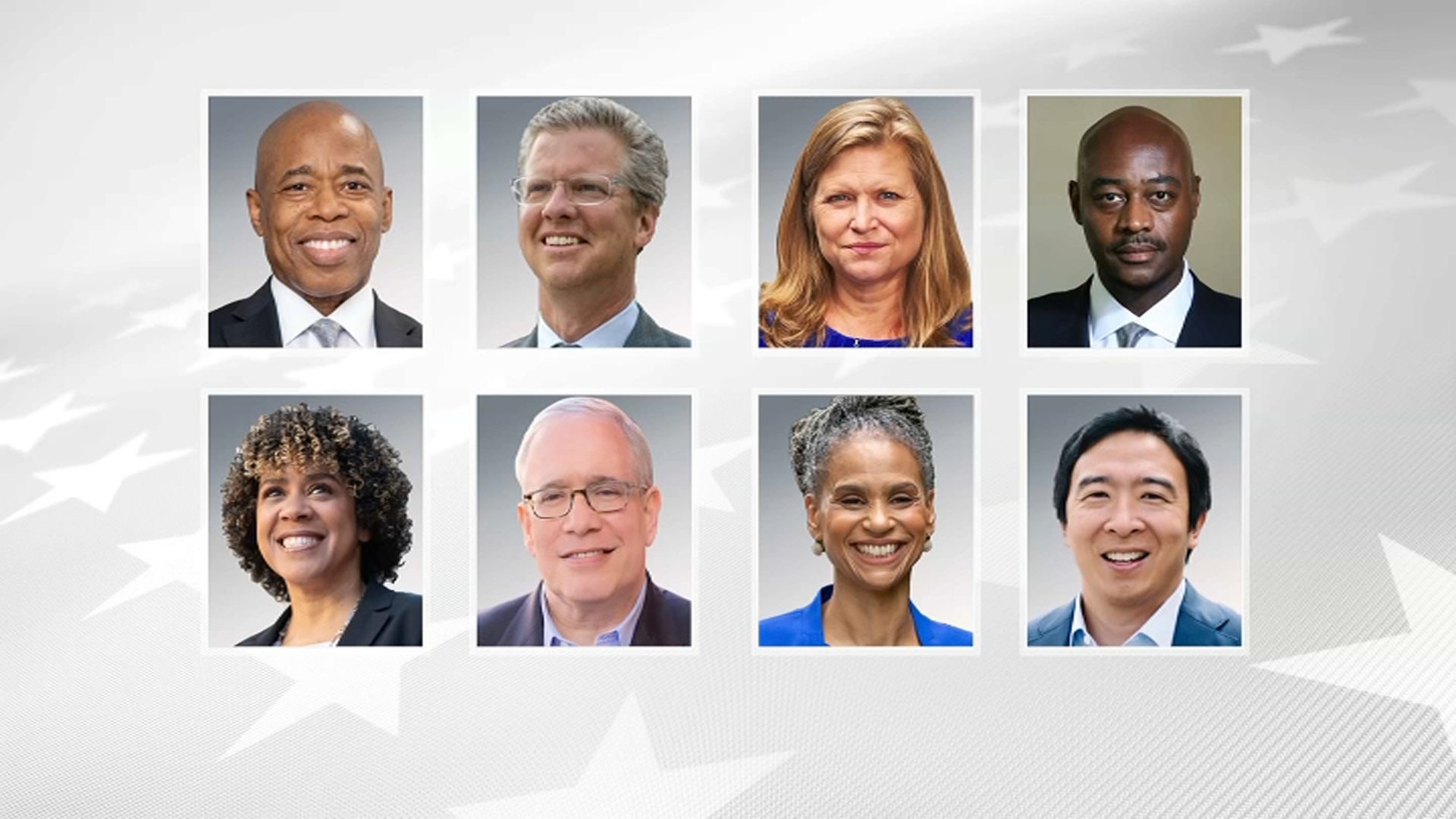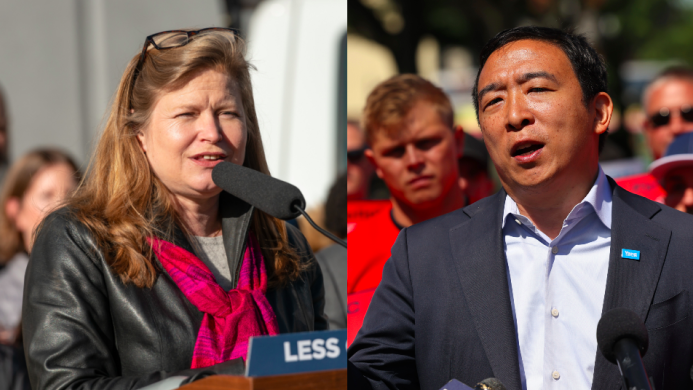Ranked choice voting makes its debut in New York City's mayoral primary Tuesday in one of the most high-profile tests yet for a system gaining use in pockets across the United States.
The system is based on a simple premise: Democracy works better if people aren't forced to make an all-or-nothing choice with their vote. Find your polling place.
Rather than pick just one candidate, voters get to rank several in order of preference. Even if a voter's top choice doesn't have enough support to win, their rankings of other candidates still play a role in determining the victor.
As outgoing Mayor Bill de Blasio said Monday, "This is an absolutely vital election. It will help determine the future of New York City as few elections ever have. The more you rank, the more impact your vote has. Don't waste your vote."
He declined to share how he will rank his top choices for the city's next mayor, but he certainly made it clear that he would rank the maximum number of candidates.
Not sure why or what to expect? No worries. We've got you covered with a rundown of how ranked choice voting works and how long it might take to finalize results.
Get Tri-state area news delivered to your inbox. Sign up for NBC New York's News Headlines newsletter.
How Ranked Choice Voting Works
The 2021 New York City Mayoral Election is the first citywide race to use the new voting system
Source: NYC Board of Elections • Andrew Williams / NBC
1) How Does It Work?
In New York City's version, voters get to rank up to five candidates, from first to last, on their ballot.
If one candidate is the first choice of a majority of voters — more than 50% — that person wins the race outright, just like in a traditional election.
If nobody hits that threshold, ranked choice analysis kicks in.
Vote tabulation is done in rounds. In each round, the candidate in last place is eliminated. Votes cast ranking that candidate first are then redistributed to those voters' second choices.
That process repeats until there are only two candidates left. The one with the most votes wins.
There are 13 candidates on the ballot in New York City’s Democratic mayoral primary. Only two candidates face off on the Republican side, making ranked choice a nonfactor.
Decision 2021
2) How Long Will It Take to Get Results?
All rounds of counting are done by computer in a process that takes very little time.
But absentee ballots complicate things. Because of the ongoing coronavirus pandemic, all people in New York are being allowed to vote by mail.
Mail ballots can be cast through Tuesday and could take several days to arrive. A complete ranked choice analysis can't be done until those ballots are included.
After polls close at 9 p.m. Tuesday, New York City's Board of Elections plans to release data on where the vote count stands based only on people's first choices, and only for votes cast in person.
A week later, on June 29, it will run its first ranked choice analysis, using only votes cast in person. Results will be posted on the board's website. They will show who the winner and runner-up would be if no votes had been cast by mail.
A week after that, on July 6, the board will do another round of ranked choice analysis that includes all of the absentee ballots processed as of that date. If there are still uncounted or disputed ballots, the process will be run yet again on July 13, and every subsequent Tuesday until a winner can be declared.
De Blasio urged people ahead of the primaries to pack their patience and recognize it could take weeks to get final results. The initial round of ranked choice voting does lend some key insight into what may ultimately happen, though, he said.
3) Why Do People Like Ranked Choice?
One benefit of the system is that nobody “wastes” their vote by picking an unpopular candidate as their first choice.
You can follow your heart and rank someone you like No. 1, even if you suspect that candidate doesn't stand a chance. If that person is eliminated, you still get a say in who wins the race based on your other rankings.
Another benefit is that it's tough for someone to get elected without broad support. In a traditional election, it's possible for someone with fringe political views to win in a crowded field of candidates, even if they are deeply disliked by a majority of voters.
That's theoretically less likely in a ranked choice system. A candidate could get the largest share of first-choice votes, but still lose to someone who is the second or third choice of a large number of people.
Decision 2021
4) What Are the Negatives?
The system is tough to grasp. It requires voters to do a lot more research. It also makes races less predictable.
Transparency and trust are also potential problems. Ordinarily, candidates, the public and news organizations can see votes coming in, precinct by precinct, and know exactly who is leading and where their support is coming from.
Under the modern ranked choice system, the process of redistributing votes is done by computer. Outside groups will have a harder time evaluating whether the software sorted the ranked votes accurately.
That’s a headache for news organizations, like The Associated Press, that analyze vote tallies and attempt to report a winner before the count is complete.
And there may be instances where candidates who seem to have a comfortable lead in first-place votes on election night lose because relatively few voters rank them as their second or third choice. That could lead to people questioning the results.





